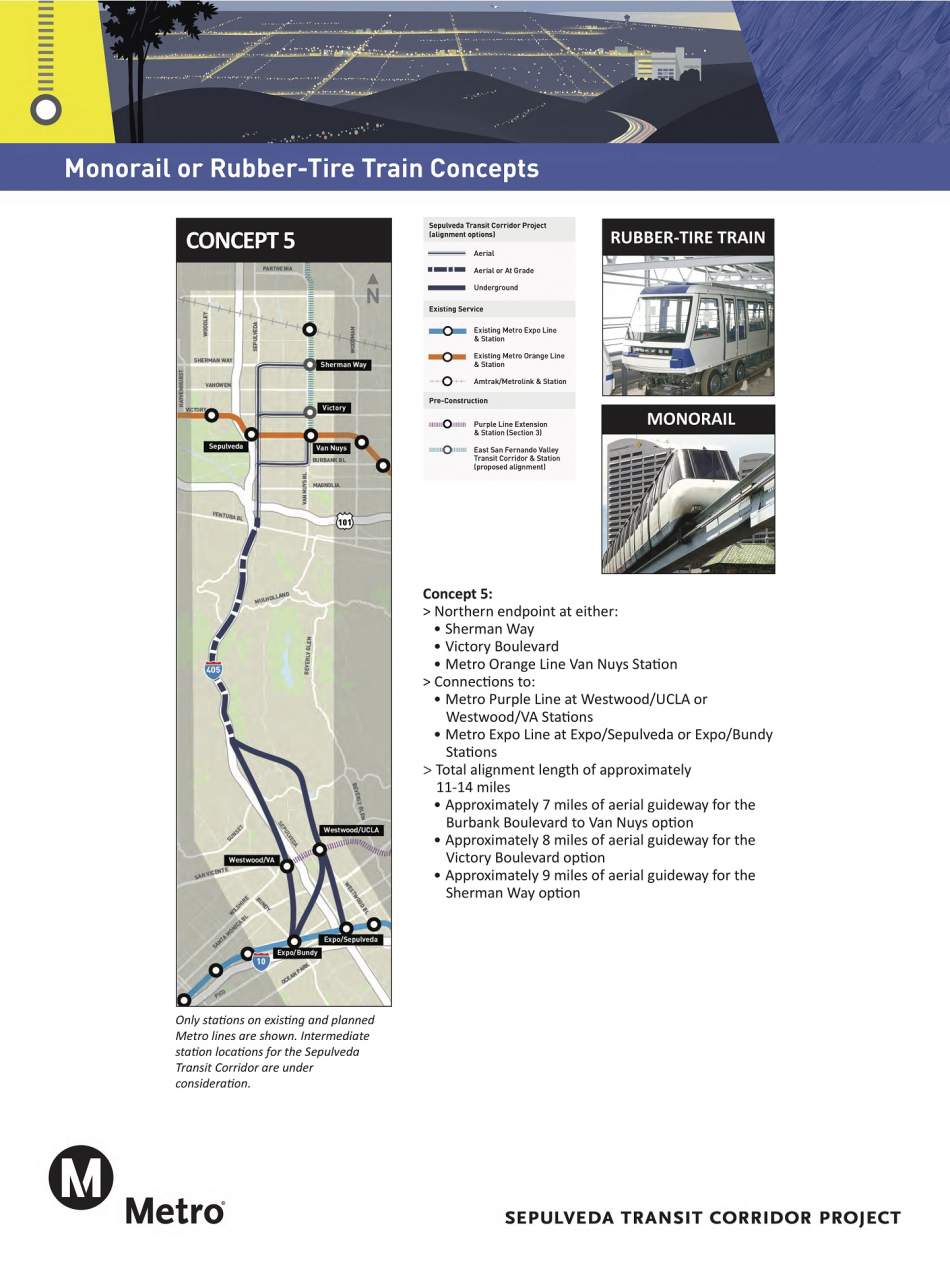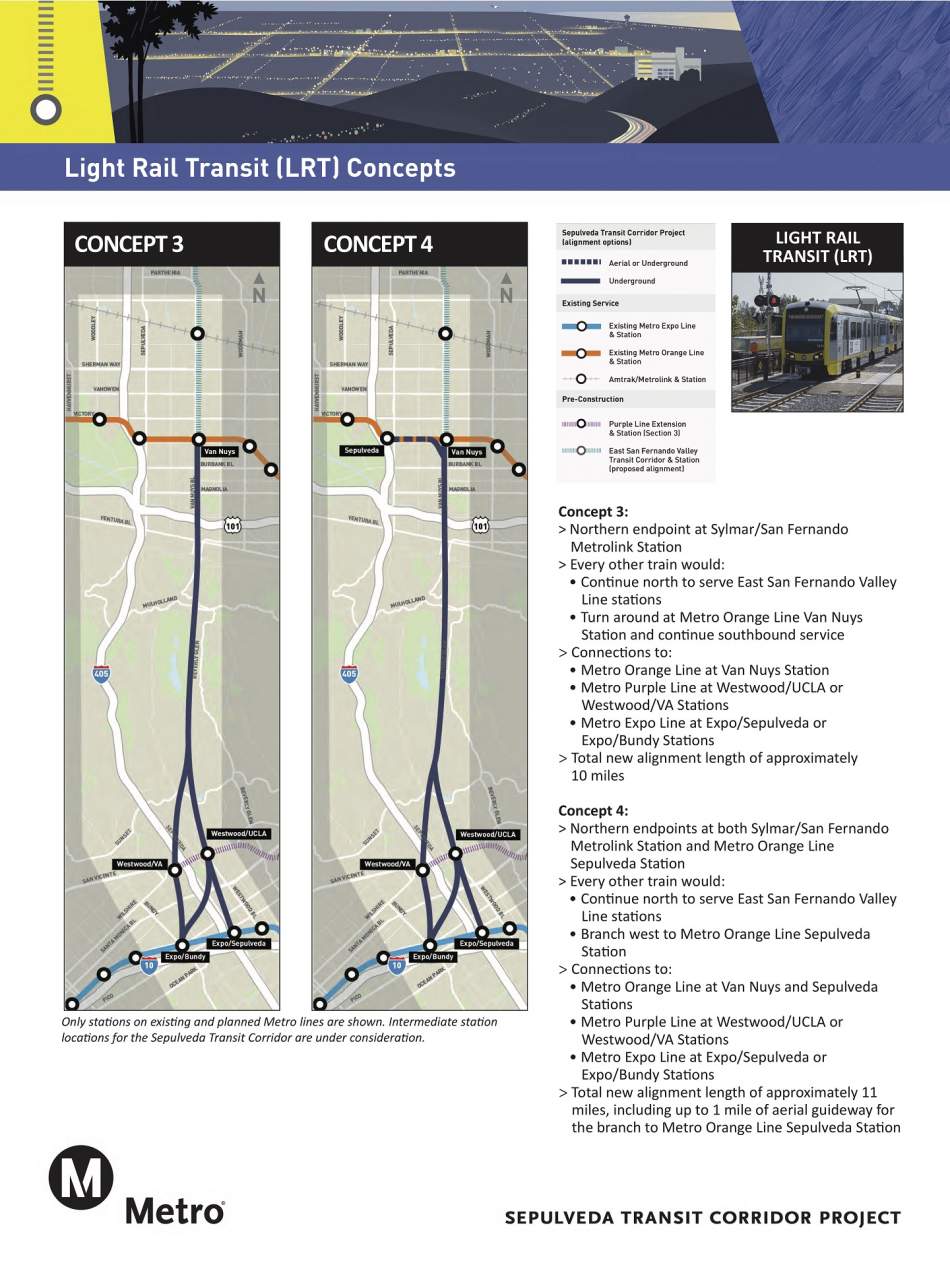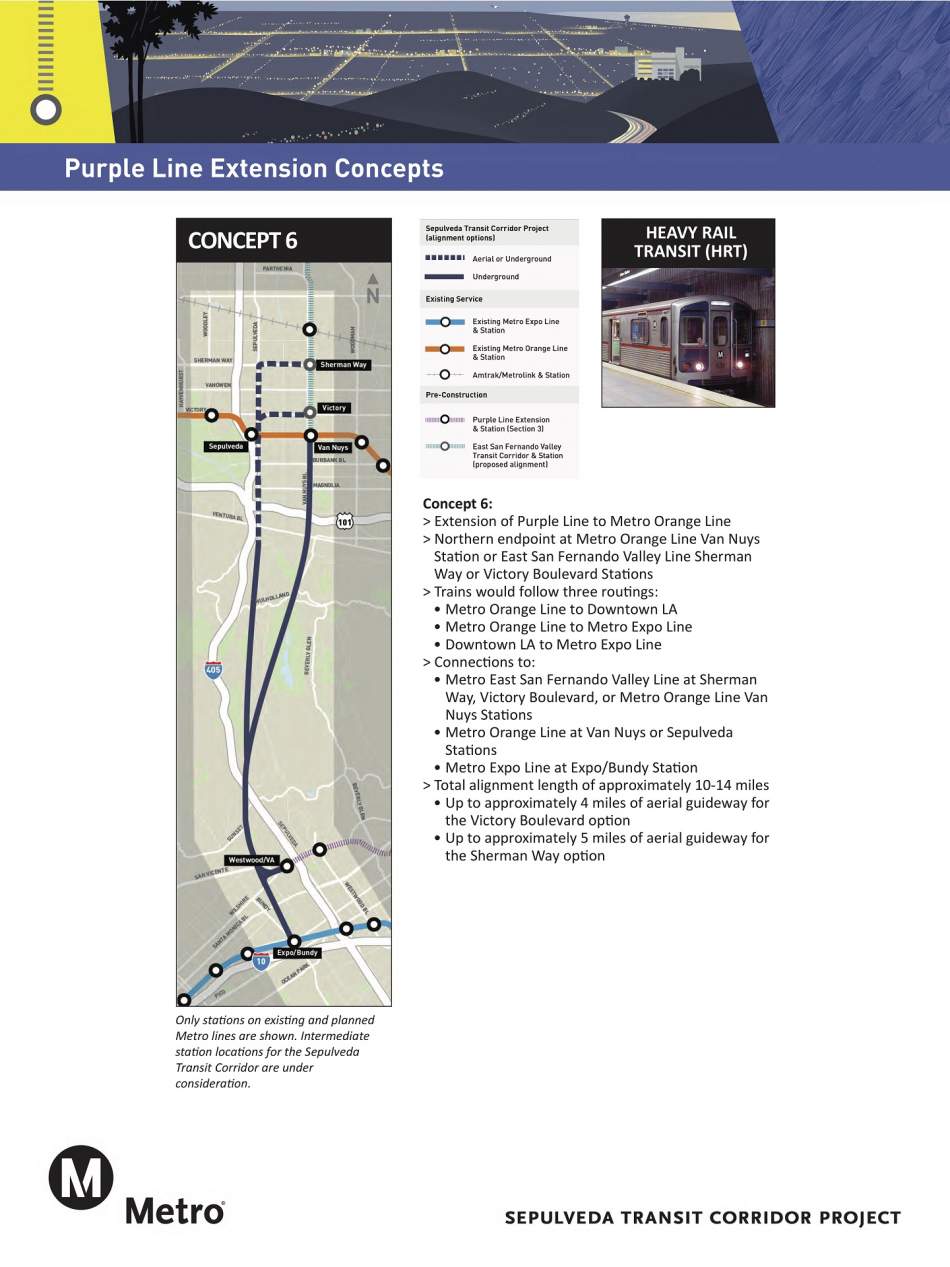The promise of a rail line through the congested Sepulveda Pass was one of the linchpins of the successful campaign for Measure M, through which voters elected to raise L.A. County's sales tax to raise billions of dollars to fund transit projects throughout the region. Yesterday, at a community meeting in Westwood, Metro unveiled six initial concepts for the project.
Heavy Rail

Concept 1 envisions an approximately 10-mile, fully underground heavy rail line which would link the Expo and Purple Lines in West Los Angeles with the Orange Line in the San Fernando Valley, as well as a planned transit line along Van Nuys Boulevard. While a northern terminus would be established ar the Van Nuys Orange Line station, service would proceed south to either the Expo Line's Expo/Bundy or Expo/Sepulveda Station via the Purple Line's Westwood/VA or Westwood/UCLA Stations.
In Concept 2, trains would instead intersect with the Orange Line at its Sepulveda Boulevard Station before turning east to intersect with the Van Nuys transit corridor at either Sherman Way or Victory Boulevard. This option would result in up to 13 miles of track.
Unlike Concept 1, Concept 2 could allow for an aerial alignment starting shortly before Ventura Boulevard.
Heavy rail trains can run in six-to-eight-car sets, with 810 to 1,080 passengers. Maximum speeds are set at 70 miles per hour.
Light Rail
The light rail Concept 3 would follow the same route and offer the same connections as the heavy rail Concept 1.
Light rail Concept 4, however, also offers the possibility of turning service along the Sepulveda Line west on an aerial alignment to a terminus at the Orange Line's Sepulveda Station. This could also offer the possibility of interlining with the Orange Line, which is to be converted to light rail under the Measure M expenditure plan.
As with Metro's other light rail lines, trains would run in three-to-four-car sets, with 405 to 540 passengers per train. Maximum speeds are capped at 65 miles per hour.
Monorail/Rubber-Tire Train

Concept 5 envisions a monorail or rubber-tire train to serve the Sepulveda Transit Corridor, with possible alignments between 11 and 14 miles.
Service would be provided through underground tracks in West Los Angeles, before transitioning to an aerial or at-grade structure that would run along the 405 Freeway. Service within the Valley would be provided on aerial structures, with potential routes along Burbank Boulevard, Van Nuys Boulevard, Sepulveda Boulevard, Victory Boulevard, and Sherman way.
According to an info sheet produced by Metro, monorails can run in eight-car sets with up to 480 passengers per train. Maximum speeds are capped at 50 miles per hour. Rubber-tire trains have a higher capacity, with maximum nine-car train sets with up to 1,440 passengers. Maximum speeds are set at 50 miles per hour.
Both modes are capable of operating on steep grades, as are seen in the Sepulveda Pass.
Purple Line Extension
In Concept 6, Metro offers up the possibility of constructing the Sepulveda Transit project as an extension of the heavy rail Purple Line.
Under this concept, trains would follow three routes:
- Orange Line to Downtown Los Angeles
- Orange Line to Expo Line
- Downtown Los Angeles to Expo Line
Concept 6 would require 10 to 14 miles of track, although it would not allow for more direct service to the UCLA campus in Westwood.
The Sepulveda Transit Corridor is set to receive $9.8 billion in local funding through the sales tax Measure R and M - including the construction of ExpressLanes through the Sepulveda Pass by 2026. The Valley-to-Westside segment currently under consideration has $5.7 billion in dedicated local funding and is currently scheduled to open by 2030. A second phase of the project - which would run from the Westside to LAX - would receive an additional $3.7 billion, with completion scheduled to occur in 2057.
That timeline could be accelerated substantially, with Metro considering potential partnerships with private infrastructure firms. The Sepulveda Transit Corridor has also been identified as one of 28 projects that Metro hopes to complete before the 2028 Summer Olympic Games.








